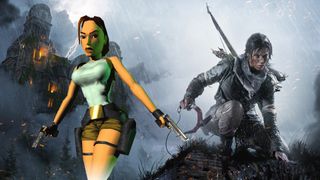
It has been 20 years since the first Tomb Raider came out. Two decades of gaming that have been full of trends, new genres, old ideas and, in some areas, remarkably little change.
It’s been twenty long years and yet E3 this year actually had fewer female protagonists in its showcase than the previous year - and that level of representation accounted for only 9 per cent of what was on show to begin with.
It might feel like we’re moving backwards, or like we haven’t made nearly as much progress as we should have, and perhaps that’s the case - but Lara Croft herself has come a long way in those 20 years, says Rhianna Pratchett, lead writer on the two most recent Tomb Raider games.
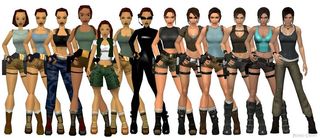
“The way she's marketed now is very characterful and strong, and it says a lot about her emotional and mental state," says Pratchett.
"It was one of the things that attracted me to the project - not just their vision for Lara, but how she was being used.”
Rebooting an icon
Lara was first re-introduced to players in the 2013 Tomb Raider reboot, in which she was shown as a vulnerable and emotionally complex character, in contrast to the sassier protagonist she was in the older games. This made a lot of people very angry - both people who weren’t interested in Lara’s emotional development and origins, and those who thought it was an unfair portrayal of a character that seemed so strong before.
But a female protagonist showing weakness does not make them weak, says Pratchett.
Get daily insight, inspiration and deals in your inbox
Get the hottest deals available in your inbox plus news, reviews, opinion, analysis and more from the TechRadar team.
“I saw previews of the game where they were basically just playing the opening part of the game and being critical, because that's what they thought all Lara's arc was, she was just going to be a bit scared for the whole game.”
There's no bravery without fear
Rhianna Pratchett
That wasn’t what they had in mind for Lara’s new story at all, but some people couldn’t see beyond those first couple of hours.
“We aren't used to seeing characters - male or female - showing much emotion in games,” says Pratchett.
“People were a little taken aback that we were showing a character having all the guns and gadgets and being scared and worried and confused and feeling vulnerable and turning to others for help.
"I don't think people were used to it - but I think there's no bravery without fear, so it was important to show her getting over that fear, and that's what a lot of people found inspirational about that Lara.”
Monsters, thugs and the essence of diversity
This is what’s important about the varied representation of women in games - and every other medium, too. The wider diversity of female protagonists we have, the more acceptable it will be to have flawed women, broken women, weak or evil women. As it stands, every less-than-perfect female character gets picked apart and held up as a representation for all female characters - and that’s what happens when the stage is so empty that the spotlight only shines on one person at a time.
I don't care about [a character's] moral compass - they don't have to be good, they just have to be interesting!
Rhianna Pratchett
It’s harder to find relatable characters in a world that wants women to be flawless, and one of the biggest steps away from that is to allow women to be more than just strong or supportive.
“I don't want female characters to be these perfect representations of womanhood,” says Pratchett.
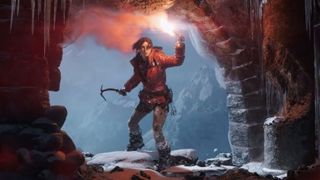
“I want to see female masterminds and criminals and monsters and thugs and outlaws and families. I want to see all the diversity in female characters that we see in our male characters. I don't care about their moral compass - they don't have to be good, they just have to be interesting!”
When male characters are inept, hateful, hated, awkward, or mistreated by other characters, it is because of who they are, because of their personality or flaws. If a woman is treated badly by other characters, or if she is shown to be bad at her job, or even just shown to be a bit of an arsehole, then that huge pressure she has on her to be a positive representation of women will end up falling down on her head.
Ellen Ripley, Sarah Connor and pop-culture catch-up
Back in the 80s, when Pratchett was growing up, there was a sudden glut (well, a small glut - a mini-glut) of female protagonists in film. As a result, the first Tomb Raider didn’t seem as big of a deal as it was.
“I can't remember thinking about it too much at the time...it was the heyday of the fantasy and science fiction movies, so I was used to Ellen Ripley and Sarah Connor, and I just thought oh, that's nice, games are catching up!” reminisces Pratchett.
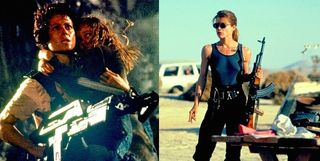
In many ways, games are still catching up to film and TV - especially now, with shows like 30 Rock, Netflix's Orange is the New Black and various Marvel offerings that have diverse casts and teams working behind the scenes. Season two of Jessica Jones will be entirely directed by women, for example, and yet the games industry still lags behind in every area.
It felt like the world was recognising that female characters can be exciting and popular and make money, as well
Rhianna Pratchett
But rather than be held back or intimidated by the gulf between the TV and film industry and games, Pratchett thinks we should be inspired by it.
“I'd say the Hunger Games has helped," suggests Pratchett. "It was pretty well-received and had big box-office sales and has become so phenomenally popular."
"Even stuff like Frozen - it felt like the world was recognising that female characters can be exciting and popular and make money, as well. For a lot of people - especially those who have the power, who are funding projects - that is going to be important.”
Turning the tide
Convincing executives, most of whom are likely to be older men, that female characters are not only crucial, but lucrative - that, for some reason, is a sticky issue. Remember when Ubisoft said that female characters would have doubled the cost of production? And that it was “not like we could cut our main character Arno”? This is the problem - male characters are seen as the default, and trying to change that is like trying to reverse the flow of a river. It can be done, but only with a lot of time, effort and willing volunteers to help out.
Those willing volunteers are the game developers and studios who are making games - so please, if you’re thinking of making a game, try starting with something that isn’t your default male lead, someone who isn’t what your mind jumps to first. Try telling the same story through the eyes of someone different.
Every game has the possibility of being someone’s first game, or the first game that meant something to them
Rhianna Pratchett
Some people suggest genderswapping characters - writing as you would normally write, then swapping and changing characters until your cast is more diverse. That’s one option, and it certainly ends up with a more positive outcome than just leaving your writing as the more socially biased thing it started out as. But it doesn’t actually address the underlying problems - why are those characters the defaults in the first place?
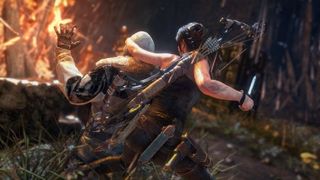
Pratchett suggests going right back to the first step, instead. “Just create an interesting character, and think, “if they're male, what nuances might that add to it? If they're female, what nuances?
”The most important thing behind the writing of a game is that it’s not just for you, and it’s not just for die-hard fans, either. Every game has the possibility of being someone’s first game, or the first game that meant something to them, that resonated with them in some way. Diversifying the cast is a way to reach more people, to tell more stories, to connect with them in different ways."
Influencing a generation
“I don't think I realised how much of an influence seeing characters like Sarah Connor and Ripley had on me as a kid,” says Pratchett. “I thought that was just how women were depicted!”
It’s not hard to see that young girls and boys are taught from an early age about what they are capable of by what they see on-screen. In the 80s and 90s, that was likely to be through film and TV; now, it’s just as likely to be games - if not more likely, due to the inherent role-playing aspect of games.
Pratchett hopes to continue the positive work directors like James Cameron offered through movies like Terminator 2: Judgement Day and Aliens. “I wanted to create that feeling in the next generation of gamers, because I love a good male character, but there's something about a great female character and a great female-led story that just resonates more with me.”
“I'm looking back to the feeling I got, rather than the characters themselves,” Pratchett adds.
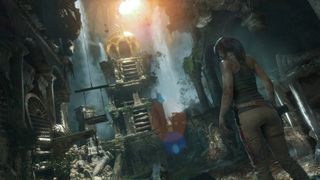
It’s about fostering a genuine connection with the players - it’s saying, here is someone who looks like you, acts like you, someone you can feasibly imagine yourself being in a few years’ time. Maybe you’re not an archaeologist, and maybe you’ll never climb icy cliffs with quite as much reckless abandon, but this could be you. And you are capable, you are strong, you are not alone in this. The world acknowledges you, and you can be great.
I’m a woman. I’ve played games all my life. I’ve never once played a game where I felt like myself. I’ve played as a seven-foot muscle-bound man, a tiny megalomaniacal dwarf, I’ve even played as a magical boy who can turn into a wolf - but I’ve never, in my 20-whatever years of pressing buttons, found myself, or even someone I wanted to be.
It’s like being an avid book reader - I’ll keep picking them up, I’ll keep trying, and I’ll love all the ones in between then and now that touched a part of me, but until there’s one that feels whole, I’ll never quite feel at home here. I hope that games can keep adding and fleshing out their female characters, because every girl, every woman deserves to feel represented.

